Civita Castellana is a village in Tuscia that is rich in necropolis and sanctuaries. Already in pre-Roman times it reached a high level of civilisation as the capital of the Italic Falisci people.
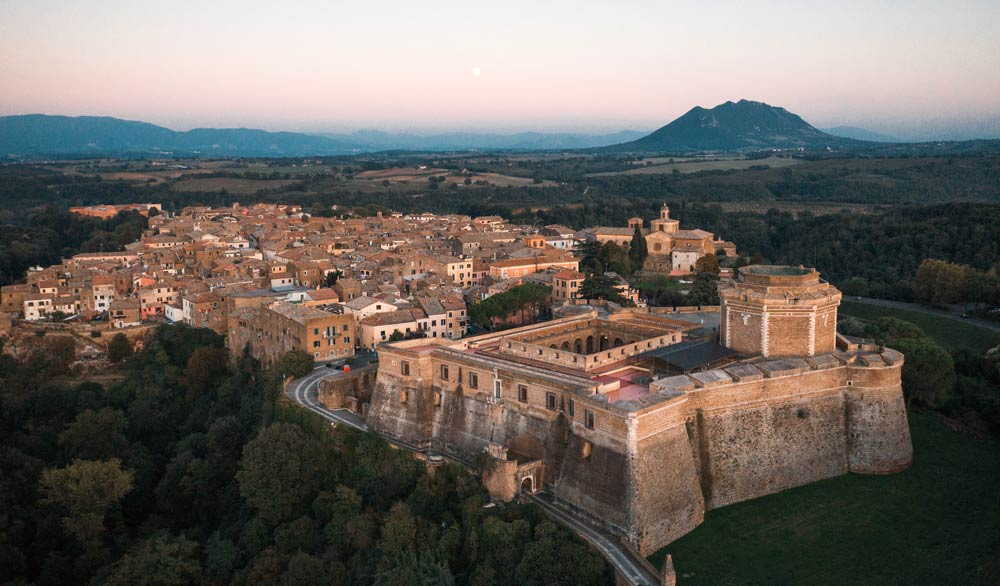
Civita Castellana
Don’t miss the many workshops in the historic centre to discover small reproductions of Etruscan, Faliscan and Greek ceramics. There are also those who make classic and modern furnishings and those who paint on ceramics in the typical Tuscia Viterbese style. The origins of ceramic work date back to the Etruscans. Archaeological excavations in the necropolises have brought to light many finds that document the strong presence of the Art of Ceramics at a very high level.
The artistic ceramics of Tuscia viterbese are distinguished by being manufactured with clays fired at different temperatures. Ceramic processing also developed on an industrial level, becoming one of the major items in Civita Castellana’s economy. One example is the sanitary ware industry. To learn about the evolution of the sector from the end of the 18th century to the thriving industrial production of the 1970s, just visit the Museo della Ceramica Casimiro Marcantoni (Casimiro Marcantoni Ceramics Museum) set up inside the former San Giorgio Church in the village.
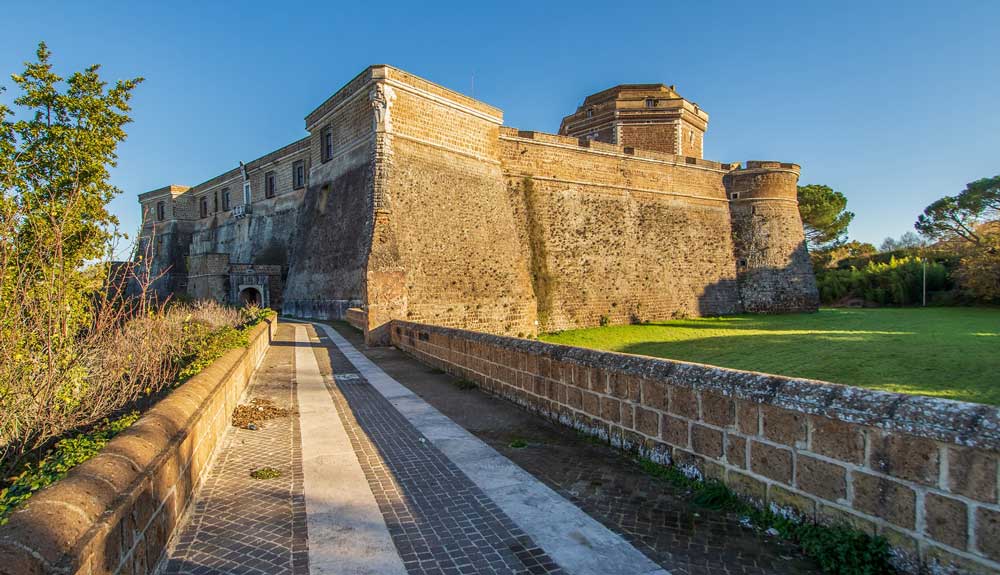
Forte Sangallo – Civita Castellana
In Civita Castellana’s Forte Sangallo, history between 1400 and 1500 relives, with the famous passages of the Borgias and the dark ones of the brigand Gasbarrone. Built on the remains of a former medieval fortress, it made Civita Castellana impregnable for centuries. Forte Sangallo is a monumental work that bears the signature of the famous architect and military engineer Antonio Giamberti da Sangallo, known as the Elder. The fortress is one of his greatest masterpieces. It was a papal residence until the early 1800s and was then used as a political prison. From 1846 to 1861 it became a military prison and, from 1905, a district house of the Kingdom of Italy.
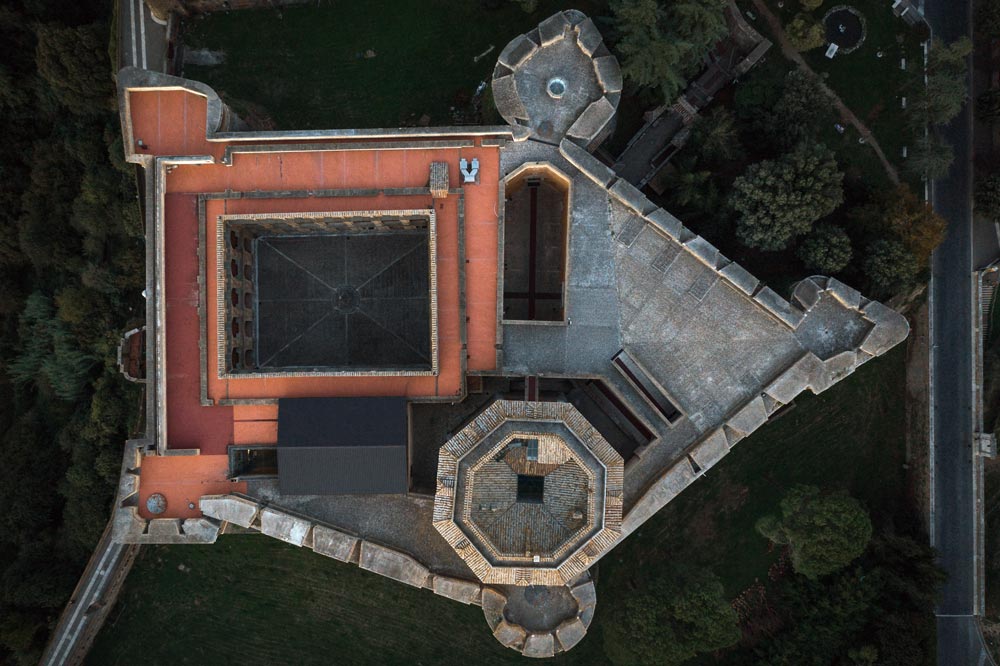
Forte Sangallo – Civita Castellana
Forte Sangallo had a long period of decline after the prison was decommissioned in 1961, which ended in the late 1960s with the conservative restoration of the building. Today it is home to the Archaeological Museum of the Agro Falisco. It is the collection point for archaeological finds discovered in the Agro Falisco during excavation campaigns at the end of the 19th century. The museum’s exhibition itinerary is divided into nine rooms. They are located on the main floor of the palace, in the former papal flats, and arranged in topographical and chronological order.
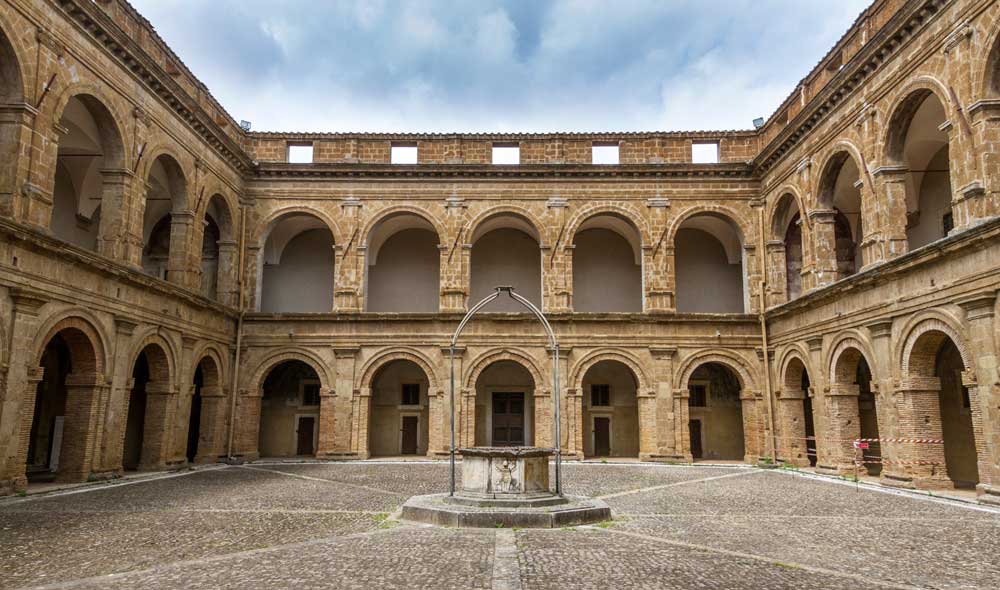
Forte Sangallo – Civita Castellana
The abundant ceramic production of the main centre in the area, Falerii Veteres, today’s Civita Castellana, is documented. The evidence ranges from the oldest finds, with graffito and plastic decorations, to those from the 4th and 3rd centuries B.C., made with black paint, silver, overpainting and red figures. There are also objects from the city’s various sanctuaries and from Corchiano and Narce. Not to be missed is the skull with the still well-defined gold teeth, a Roman chariot, unique in the world, a model taken up in the imperial age.
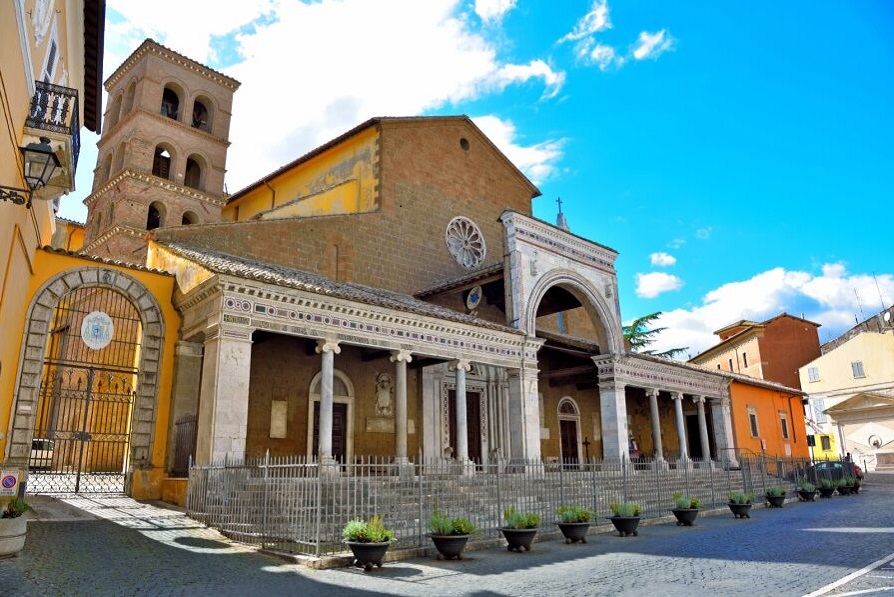
La Cattedrale di Santa Maria Maggiore
Don’t miss a visit to the Duomo dei Cosmati, also known as the Cathedral of Santa Maria Maggiore, the most important place of worship in Civita Castellana. Did you know that it was here in 1770 that the famous Austrian composer Wolfgang Amadeus Mozart played the organ during a stopover in the village on his way back from Rome? A plate at the entrance to the cathedral commemorates the exceptional event.
Civita Castellana also provides panoramas of unique beauty. Like the landscape that can be admired from the Clementino Bridge, which divides the old town from the new part of the village.
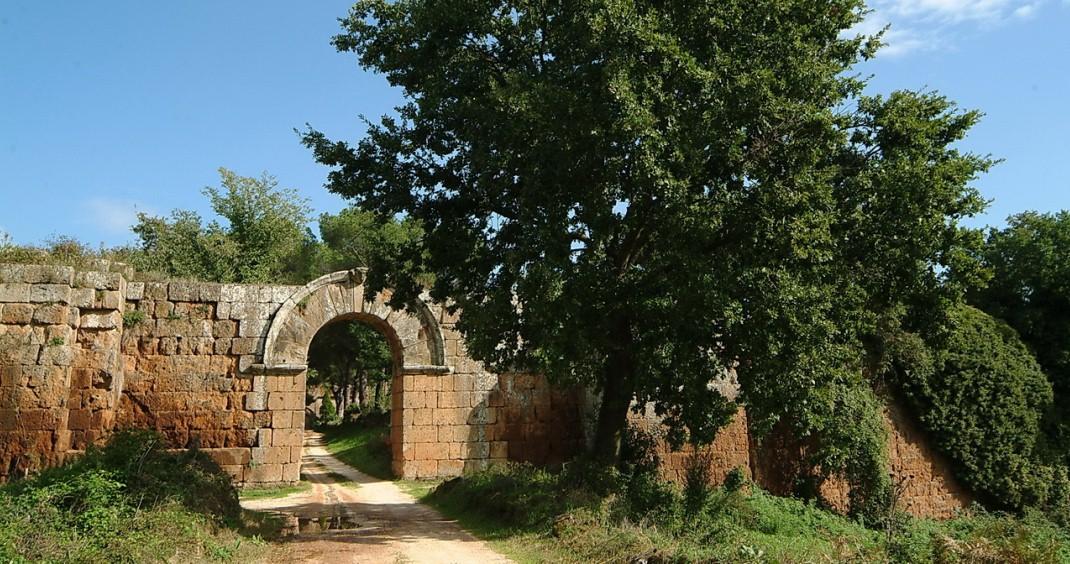
Falerii Novi
But you can also choose to walk along the Via Amerina, a perfectly preserved ancient Roman path through the territory of the ancient Falisci. On the ancient Via Amerina, about 5 kilometres from Fabrica di Roma and Civita Castellana, visit the archaeological site of Falerii Novi.
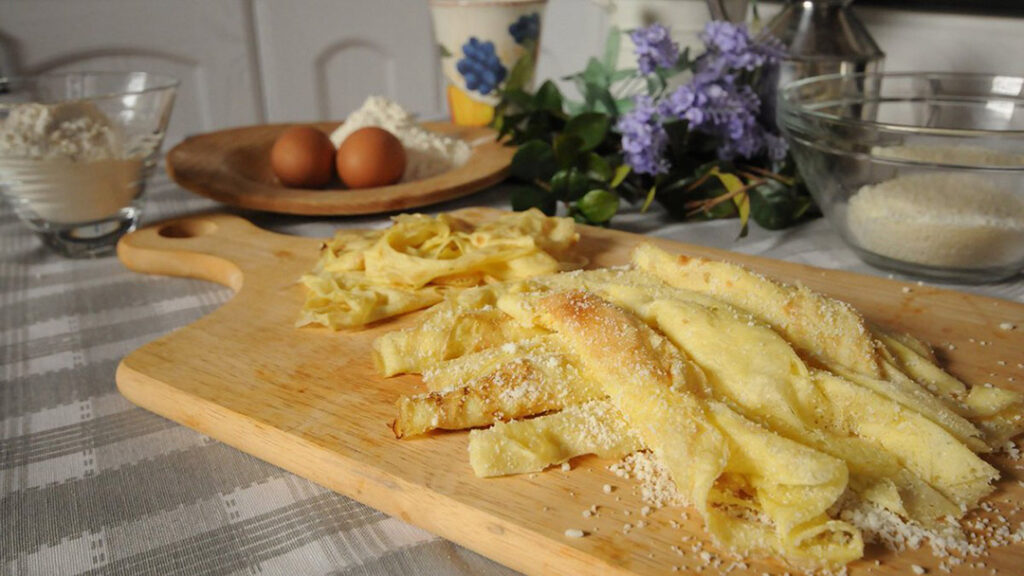
frittelloni
Among the typical dishes, try the frittellone above all at the Sagra del Frittellone in September. The Frittellone is a very thin omelette that is rolled and sprinkled with pecorino cheese. A true symbol of Civitella’s culinary tradition.
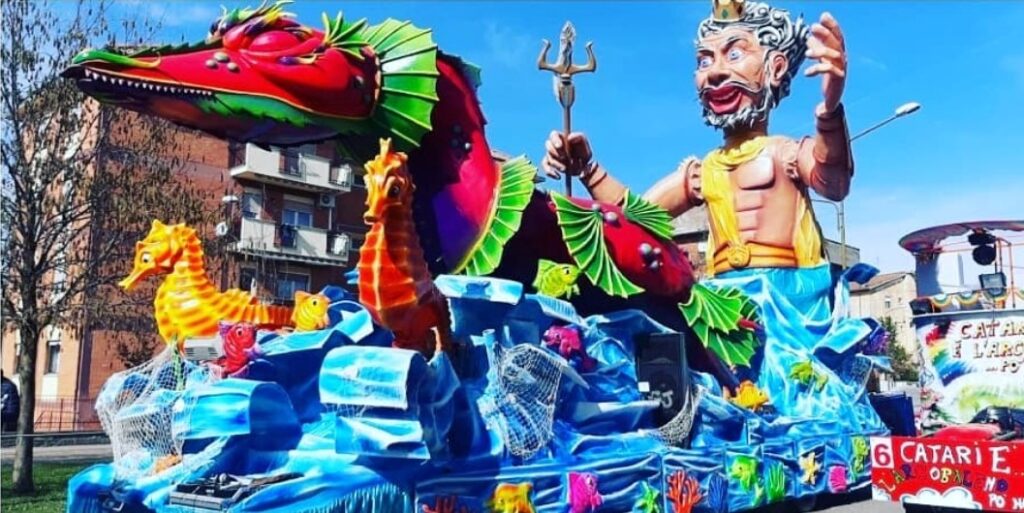
Carnevale Civitonico – foto Instagram @carnevalecivitonico
Among the most lively and scenic celebrations is the Carnevale Storico Civitonico, with floats and masked groups leading the parades in an explosion of colours. At the end of the festivities, the Carnival King ‘Puccio’ is burned at the stake while everyone enjoys fritters. The investiture of the Carnival King takes place at the feast of Saint Anthony Abbot on 17 January. The papier-mâché Puccio is a fictional figure, a pot-bellied, ruddy puppet who lives by whispers and intemperance. He is accompanied by the most bizarre band known, La Rustica, who can turn the most extravagant objects into musical instruments.
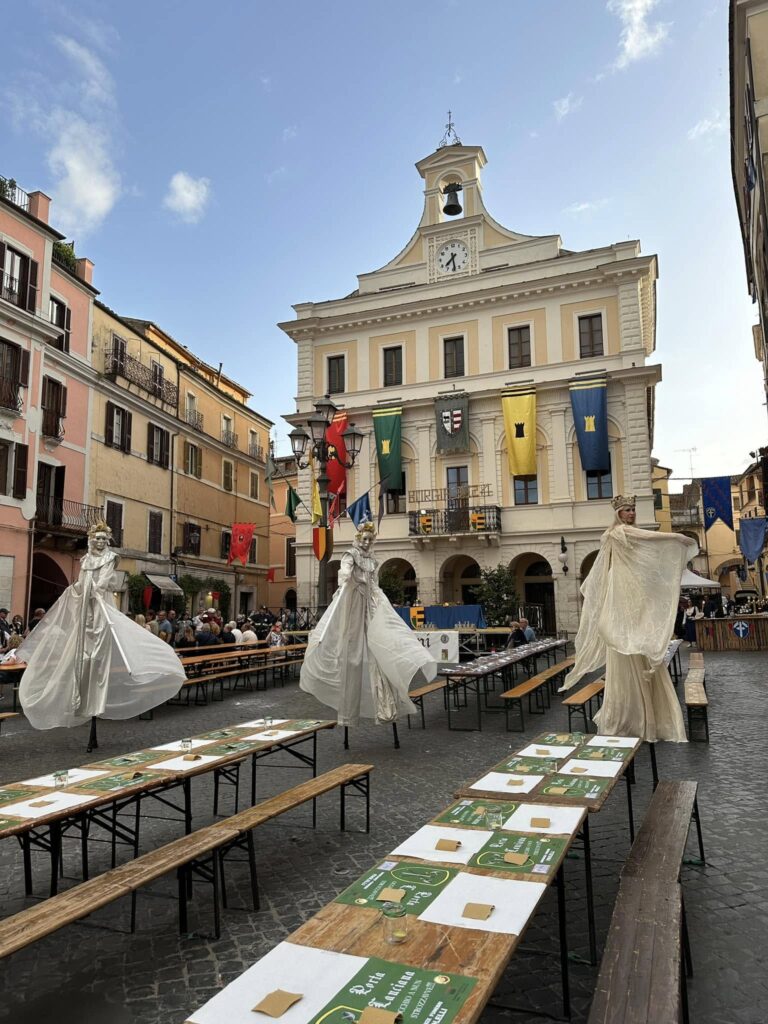
Ludi Borgiani 1 – Facebook @Ludi Borgiani
In May, Civita Castellana celebrates the Ludi Borgiani, a journey back to the Renaissance in Tuscia Viterbese from the end of the 15th to the beginning of the 16th century, with historical processions in period dress, cultural events, popular games, palii, historical re-enactments and open taverns to relive the splendours of the Renaissance.
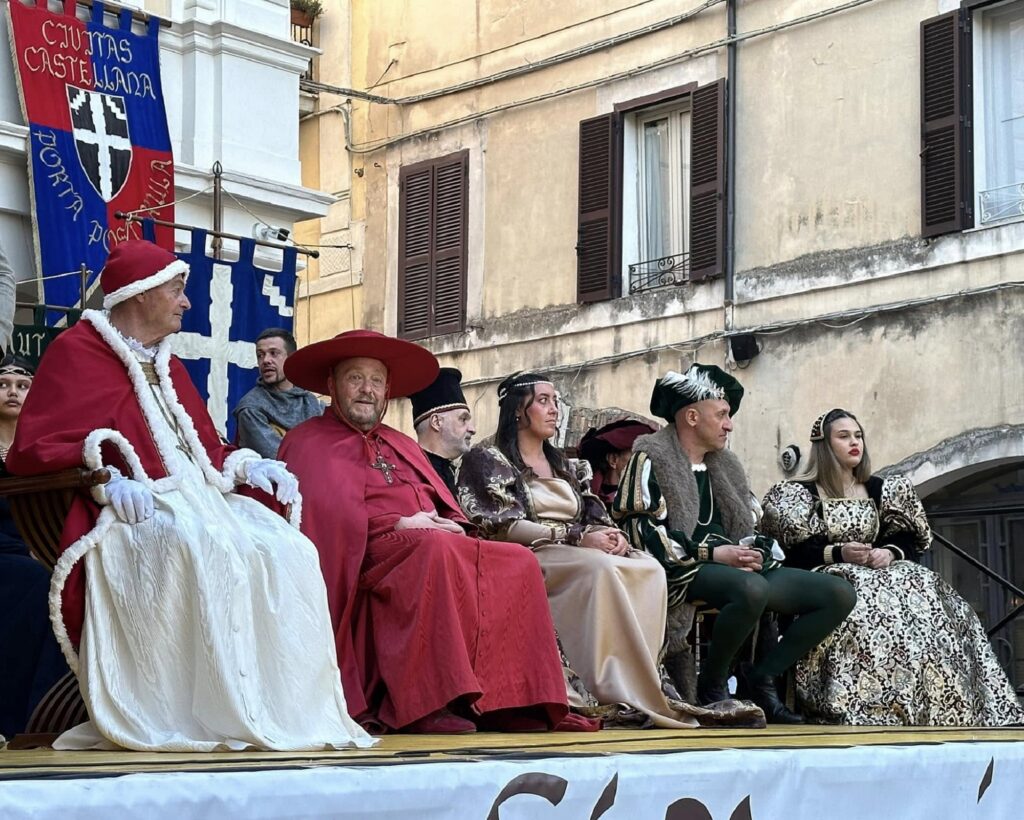
Ludi Borgiani – Facebook @Ludi Borgiani
The highlight is the historical procession with more than a hundred figures accompanying Pope Alexander VI Borgia, as happened in 1502 when he chose Civita Castellana as his royal seat. He transformed it into a Renaissance court under the leadership of master of ceremonies Joannes Burcard. Scenic effects, armour and banners bring back the Renaissance splendour of the Borgias.
